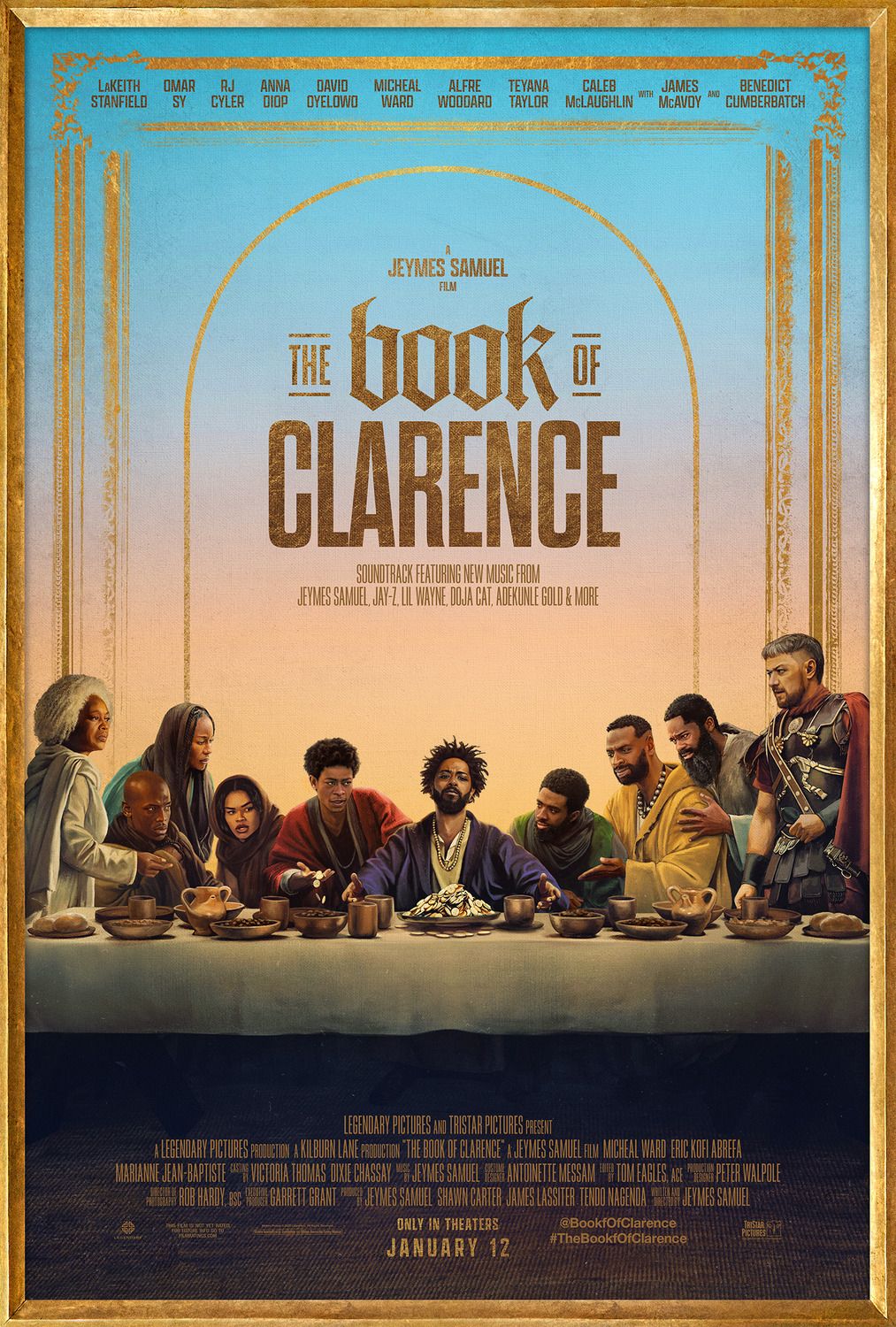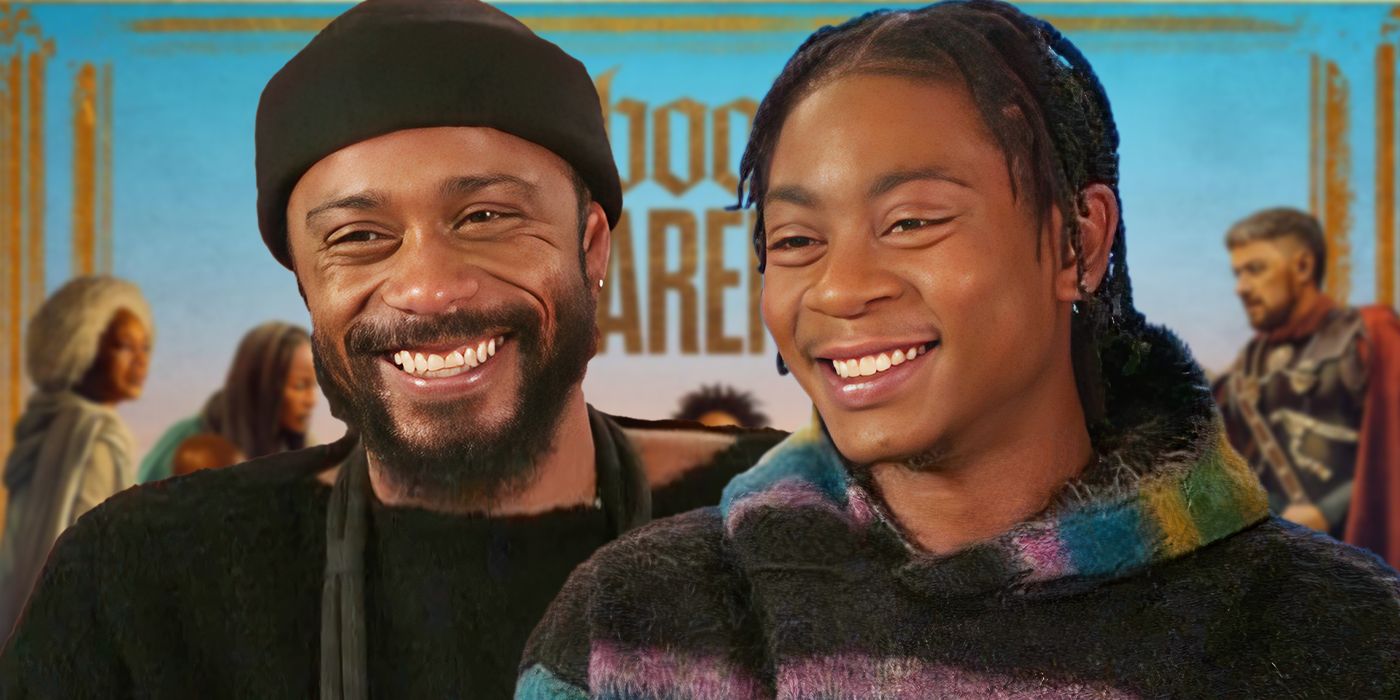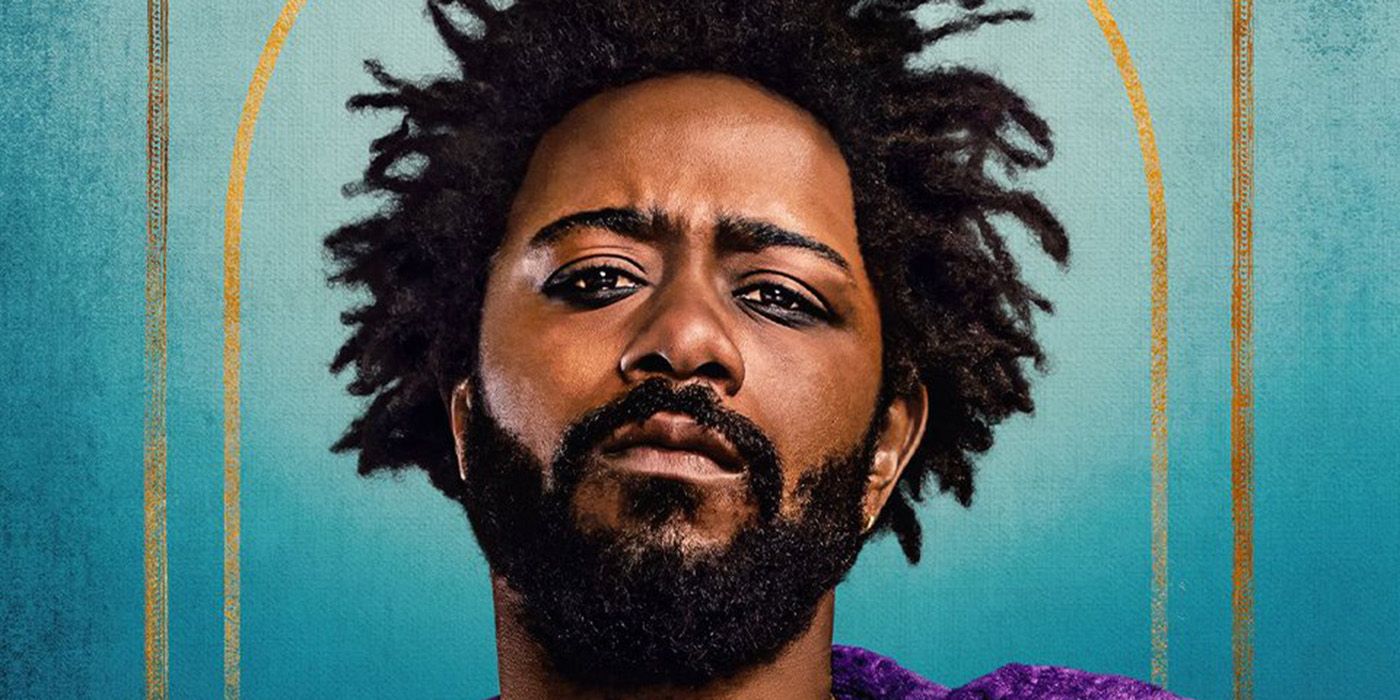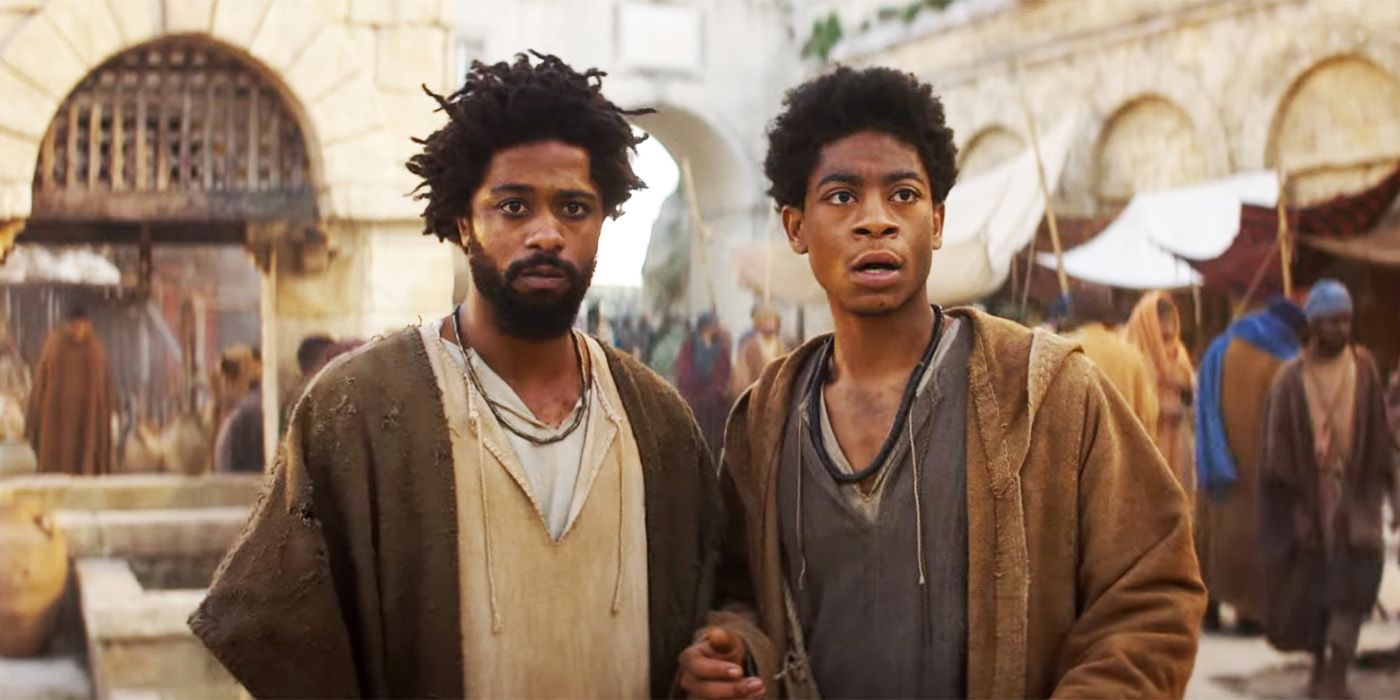The Big Picture
- The Book of Clarence is a unique biblical dramedy with three differing interpretations of the Messiah.
- The film explores knowledge vs. belief, not mockery, cleverly challenging faith and encouraging questioning.
- The movie offers nuanced commentary on religion, acceptance, and redemption, making it a thoughtful examination of faith.
The Book of Clarence is the kind of movie you don’t know you want to see until you see it. A film about a man pretending to be a false prophet for his own personal gain in the age of Jesus isn't exactly driving people into the theaters. However, The Book of Clarence isn’t so much a religious movie as it is a movie about religion, and this is the key reason it works as not only entertainment but commentary. It’s probably not a film you’ll be seeing with your worship group - there’s a little too much weed, opium, and false idol worship for that - but it’s definitely not a mockery of faith or religion. In fact, if anything, it’s an homage to some of the great films about Christianity, such as 1956’s The Ten Commandments, 1965’s The Greatest Story Ever Told, and 1959’s Ben-Hur. Which makes sense, as director Jeymes Samuel cited these movies as inspiration in an interview with Deadline.

The Book of Clarence
Struggling to find a better life, Clarence is captivated by the power of the rising Messiah and soon risks everything to carve a path to a divine existence.
- Release Date
- January 12, 2024
- Director
- Jeymes Samuel
- Cast
- Benedict Cumberbatch , James McAvoy , David Oyelowo , Teyana Taylor , LaKeith Stanfield , Alfre Woodard
- Runtime
- 136 minutes
What Is ‘The Book of Clarence’ About?
The Book of Clarence is a biblical dramedy that takes place in 33 A.D. and follows Clarence (LaKeith Stanfield), a man from Jerusalem. In debt to a terrible loan shark, caring for his ailing mother, and constantly finding himself in trouble, he is down on his luck and looking for a way to repay his debts. After losing a chariot race to Mary Magdalene (Teyana Taylor) that would have awarded him enough to pay his loans, he finds himself in an opium den and while smoking, he comes up with a grand idea: he’ll become a “Messiah,” like Jesus Christ (Nicholas Pinnock).
To do this, Clarence first approaches the Twelve Apostles, one of whom is his twin brother Thomas (also played by Stanfield). The Apostles mock him, claiming that he is a nonbeliever and that he’s being insincere, and say that to become an apostle, he has to dedicate his life to Jesus Christ and perform an amazing feat to prove himself. Judas (Michael Ward) suggests that Clarence free a group of gladiator slaves to earn a place as the thirteenth Apostle, which Clarence takes to heart. He manages to win a gladiatorial battle against the most brutal warrior, Barabbas (Omar Sy) and earns the warrior his freedom. From there, Clarence sets out on a path of preaching and “miracles” as the Romans become more suspicious of him.
The film is set up in three acts, or “books”: “The 13th Apostle,” “The New Messiah,” and “The Crucifixion.” They focus on their respective parts of the story, and each has one major event that demonstrates Clarence’s rise and fall as a messiah. Throughout these acts, we also meet two other key players: Jesus Christ and the beggar Benjamin (Benedict Cumberbatch), each of whom represents an idea of the messiah alongside Clarence.
The Three Messiahs of ‘The Book of Clarence’ Make a Comparison Instead of a Mockery
By using three versions of the Messiah - Jesus himself, Clarence, and Benjamin - The Book of Clarence is able to compare three interpretations of Christianity, exploring some of the issues that may arise when looking at the Bible through a historical lens and that arise from interpretation in general. Clarence provides the perspective of knowledge over belief, and this is the field many agnostic and atheist individuals approach religion from. While Clarence may seem dismissive or rude in the questions he asks and the statements he makes, what he’s truly looking for is answers. He offers the counterpoint to the believers around him by making his miracles happen through trickery and know-how and preaching about knowing instead of simply believing.
However, Clarence is also in the category of the nonbeliever who hates God. His relationship with his brother, Thomas, is extremely strained because Thomas left home to become an apostle. Clarence feels like Thomas abandoned their family - and even uses the Bible’s teachings against him, saying that Thomas has broken the commandment of honor thy father and thy mother - and claims that Thomas is following a man who could be a fraud. This particular relationship mirrors the anger and helplessness people often describe feeling in times of crisis, where many claim they lost their belief or came to hate God.

LaKeith Stanfield the Mike Tyson of Acting? RJ Cyler Thinks So
Stanfield and Cyler's new movie, 'The Book of Clarence,' is in theaters now.On the other hand, we have Jesus himself. Throughout most of the film, we don’t see Jesus’ face. During any miracles or acts of savior we see, his face is covered with a hood. When we do see Jesus’ face, we see a man closer to what anthropologists and scientists believe Jesus might have looked like. Throughout the film, characters witness his power, but mostly without seeing him, which points to him as the symbol of belief. A good example is the scene where Mary Magdalene is being stoned. Elijah (RJ Cyler) rushes to shield her from the rocks, but suddenly the rocks all stop in midair and fall to the ground. Jesus has arrived, and he tells those throwing stones that they aren’t without sin - let he who is without sin cast the first stone - and helps Mary, healing her wounds as Elijah watches. At that moment, Elijah believes. This Messiah is the closest to the biblical Jesus. He is wholly benevolent, humble, gracious, and kind, even to the nonbeliever.
Finally, we have Benjamin, a beggar given a new life when Jesus gives him the ability to multiply coins. Once he is cleaned up, we see that he is a white, blue-eyed man with long brown-blond hair, not unlike the typical depiction of Jesus seen in paintings. With his newfound ability, he showers people in the streets with money until Roman soldiers capture him. Benjamin represents the interpretation of a Messiah. It’s said that Jesus could be anyone, even a beggar on the street, and that’s exactly what Benjamin is. He has the most well-known appearance of Jesus, and is openly generous with his new wealth, and finds himself crucified for it. Benjamin is an example of the misconceptions and misinterpretations of Jesus.
By taking this three-pronged approach, The Book of Clarence moves away from mockery and into commentary about how Clarence and Jesus - knowledge and belief, the two branches that seem to constantly be at war - run together and interact with each other, yet are often overshadowed by the majority interpretation of events. If Clarence is the devil’s advocate, explaining how miracles can be done with trickery and representing how the events of the Bible very well could have been the misinterpretation of its writers, and Jesus is the idea of belief and biblical accuracy, Benjamin is the representation of what people want to believe. The simplest story, the one that may not be true but isn’t to be questioned, the one that everyone accepts.
‘The Book of Clarence’ Isn’t Blasphemy, It’s a Collaboration of Ideas
This kind of commentary on Christianity, though, is more often than not met with a lot of scrutiny. After all, Clarence is pretending to be Jesus. That’s literally blasphemy by definition! It's a mockery of faith. Except, it really isn’t. Clarence never claims to be the son of God; he just says he’s going to be a Messiah. He does this for money and power and finds himself along the way as he uses his new wealth and notoriety to free the rest of the gladiators. By the end of the film, Clarence even becomes a believer, having combined his philosophy of knowing with his new faith. He’s not supposed to be a false idol. He’s supposed to be a marriage of seeing and believing, the idea that these two philosophies don’t have to be entirely separate.
In addition, the film is one of the most accurate depictions of Jesus I’ve ever seen, but in appearance and ideology. Pinnock was excellent in the role; he is humble and carries a quiet strength and gentleness that can be hard to nail. There’s never a point when Jesus appears “impressive” or where he grows angry at what Clarence is doing. He is completely full of love and grace for humanity. The film often makes Jesus feel like a secondary character at times, which is probably a smart choice for the story this film is telling. Jesus is unassuming, but he’s supposed to be everywhere in the words and hearts of believers, and that’s how the movie portrays him. We aren’t supposed to see him, and he doesn’t have to denounce Clarence; he just is. The film isn’t about the journey to being a believer necessarily. It’s about how nonbelievers can still be good people, and Jesus cares for them just the same as he would a follower.
That’s why Clarence is never portrayed as a threat to faith in the film. He’s a challenge, but not a threat, and the film encourages his challenge. Why shouldn’t you ask questions, or try to find the logic? That doesn’t make you a heretic. It makes you human, because humans are naturally curious, and throughout history, we’ve always made up stories about the unknown or to explain the things we don’t understand. Ultimately, these themes of acceptance, redemption, knowledge, and belief are what make The Book of Clarence a movie about religion instead of a religious movie, and give the film a comedic, yet surprisingly nuanced examination of religion and the way people - both of and without faith - view it.
The Book of Clarence is available to stream on Netflix in the U.S.


